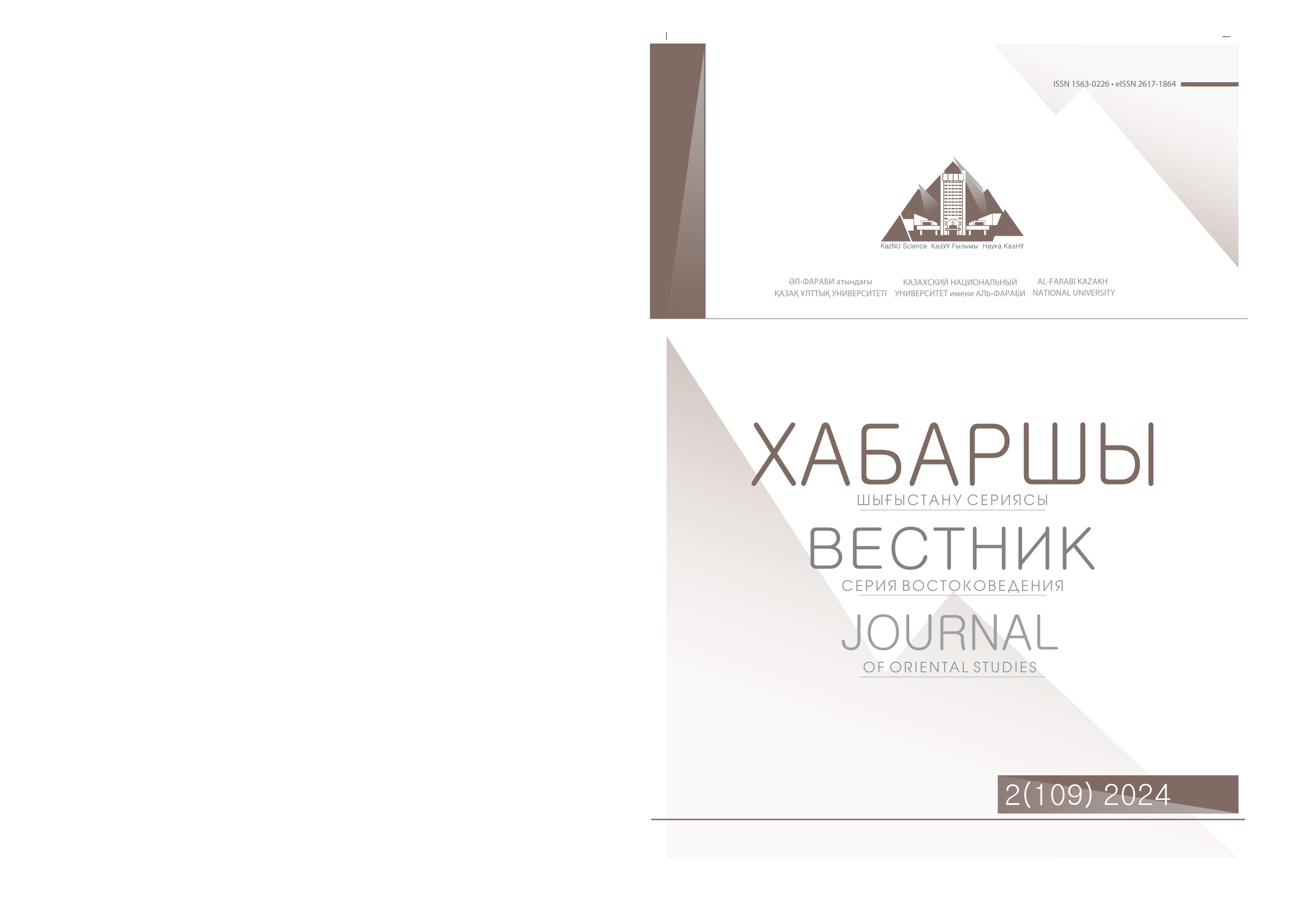ARTISTIC FEATURES OF ZOONYMIC PROVERBS IN CHINESE AND KAZAKH LANGUAGES
DOI:
https://doi.org/10.26577/JOS.2024.v109.i2.05Abstract
Proverbs and sayings were originally used as auxiliary material for the analysis of specific cultural concepts based on linguistic units that generalize certain meanings. Currently, proverbs and sayings are considered as a linguistic unit that characterizes the ethnocultural views of people in the environment, traditional stereotypes and ideas emerging in society.
Verbal units are used to describe cultural codes, mentalistic worldviews, stereotypical ideas, moral and ethical values of the people, etc., since they are continuers of the ongoing life of the nation, and also preserve the spiritual values necessary for the nation and mentality, self-awareness, identity , sacred words of wisdom passed down as an inheritance.
This article compares zoonymic proverbs and sayings of the kazakh and chinese languages, belonging to two different language families. By studying proverbs and sayings on the topic of zoonyms in two languages, we determine the cultural and linguistic features of the kazakh and chinese peoples. In the course of a comparative study of languages, one can determine the pattern of the degree of their similarity or difference from each other, and deeply understand the national character of the language. The importance of studying this issue using materials from two languages is very useful when teaching chinese to foreign students, since through linguistic and cultural information, foreign students acquire communicative competence, distinguish their semantics and character when using proverbs and sayings in the classroom.
Key words: proverb, saying, folklore, genre, Chinese language, Kazakh language.




